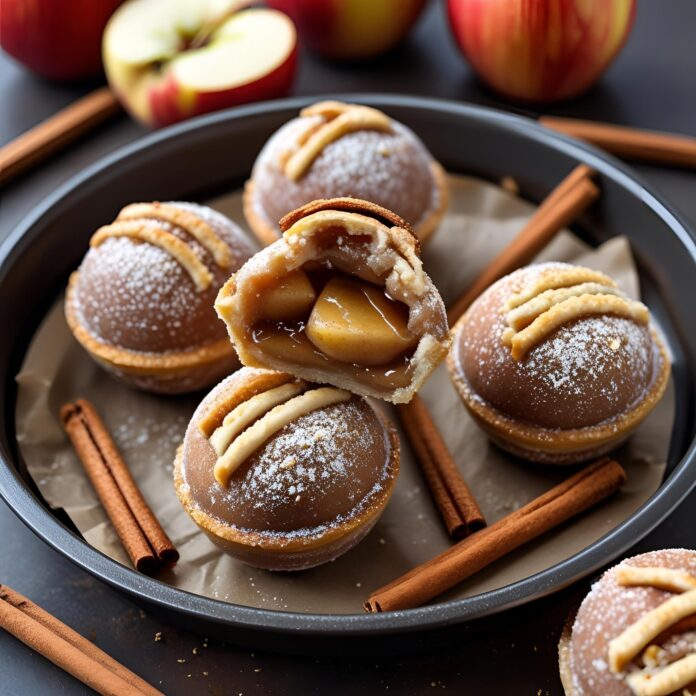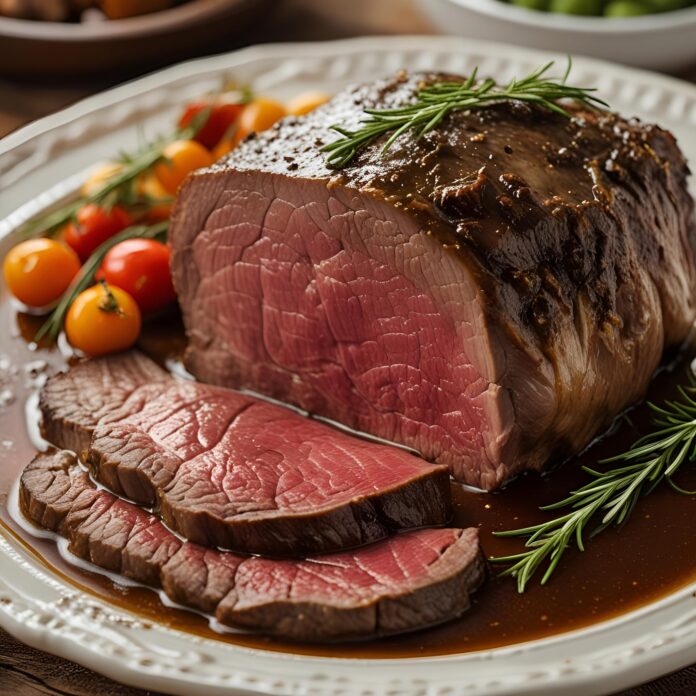Chicken Breasts with Lemon Recipe
Chicken breasts with lemon is more than just a recipe—it is a timeless expression of simplicity meeting flavor, a dish that has quietly graced dinner tables for generations across continents. It’s humble, yes, but its brilliance lies in its balance: the tender mildness of chicken, the sharp brightness of fresh lemon, the underlying whisper of herbs, garlic, and sometimes wine or butter, coming together to form a meal that feels both sophisticated and comforting. In many ways, it’s the kind of dish that captures the spirit of home cooking and elevates it to something quietly elegant.

At its core, the pairing of chicken and lemon is a marriage of opposites. Chicken breasts, especially when cooked correctly, offer a blank canvas—lean, protein-rich, and adaptable. On their own, they are mild in flavor and prone to dryness when mishandled, which is why they benefit from the lively acidity and moisture that lemon brings. The lemon’s tartness doesn’t just add brightness; it serves a functional role in tenderizing the meat, subtly infusing it with a depth of flavor while preserving its juiciness. Together, they form a partnership that is both culinary and chemical, each ingredient supporting the other to achieve more than they could alone.
The origin of this dish can’t be pinned down to a single culture, which speaks to its universal appeal. You’ll find variations in Mediterranean cuisine, particularly in Greek and Italian kitchens, where lemon is a staple component, often accompanied by olive oil, garlic, capers, or fresh herbs like oregano and thyme. In France, similar flavors might be expressed through a chicken piccata—sautéed chicken breasts served with a lemon-butter sauce, often enriched with white wine and capers. Even Middle Eastern dishes showcase similar pairings, emphasizing lemon’s capacity to enhance poultry, whether in slow-roasted preparations or skillet-seared versions.
Despite these cultural nuances, the appeal of chicken breasts with lemon lies not in complexity, but in accessibility. This is a dish that doesn’t demand obscure ingredients, specialized techniques, or elaborate equipment. At its simplest, it requires little more than fresh chicken, lemons, olive oil or butter, and a few pantry staples. Yet with the right balance, technique, and timing, it can produce a result that rivals far more intricate fare.
In today’s home kitchens, where time is short and expectations high, the dish serves as a dependable go-to for weeknight dinners, a base for creative experimentation, and a healthy alternative to heavier, cream-laden poultry dishes. Its adaptability is one of its greatest strengths—you can keep it light and clean with just lemon, herbs, and a touch of garlic, or enrich it with a creamy sauce, add vegetables, or serve it over pasta, rice, or a crusty piece of bread to soak up the flavorful juices.
In this guide, we won’t just walk through a standard recipe. Instead, we’ll explore the full spectrum of what this dish can offer. We’ll discuss ingredient selection—how to choose the best chicken breasts, what kind of lemons to use, and whether fresh herbs really make a difference. We’ll explore methods—pan-searing, baking, poaching, and even grilling—to understand how each affects the final texture and flavor. You’ll find variations from around the world, tips for dietary substitutions, and advice on presentation and wine pairings. Whether you’re a beginner trying to master a dependable dinner or an experienced cook looking to refine your techniques, this guide will offer insights that go beyond the basics.
So, if you’ve ever underestimated the power of a simple dish, this recipe is your invitation to reconsider. Chicken breasts with lemon might not sound like a culinary revelation, but cooked with care, knowledge, and attention, it can become one of the most rewarding meals in your repertoire. Through this deep dive, we’ll unlock the full potential of a dish that deserves more respect than it often gets. Let’s get started—your perfect lemon chicken awaits.
Instructions: Step-by-Step Guide to Making Chicken Breasts with Lemon
Step 1: Gather and Prepare Your Ingredients
Estimated Time: 10–15 minutes
Before beginning any recipe, mise en place—a French term meaning “everything in its place”—is essential. This step will help streamline the cooking process and ensure you’re not scrambling to chop garlic while your chicken is overcooking in the pan.
Ingredients:
-
2 large boneless, skinless chicken breasts
-
2 tablespoons extra virgin olive oil (plus more for searing)
-
2 tablespoons unsalted butter
-
1 large lemon (zested and juiced)
-
3 cloves of garlic, finely minced
-
½ cup low-sodium chicken broth
-
¼ cup dry white wine (optional, but recommended)
-
Salt and freshly ground black pepper to taste
-
Fresh herbs (thyme, parsley, or rosemary – choose one or mix), chopped
-
Optional: 1 tablespoon capers (for a briny contrast)
Prep Tips:
-
Chicken: Pat the chicken dry with paper towels to help it brown. Moisture is the enemy of a good sear.
-
Lemon: Zest before juicing—it’s difficult to zest a cut lemon.
-
Garlic: Mince finely to avoid burning in the pan.
-
Butter & Wine: Have them measured and ready. Timing is critical when you deglaze the pan.
Set all ingredients within arm’s reach of your stove. Cooking is much smoother—and safer—when you’re not running to the fridge mid-sauté.
Step 2: Butterfly and Pound the Chicken Breasts
Estimated Time: 5–10 minutes
Boneless, skinless chicken breasts are thick and unevenly shaped, which makes even cooking difficult. By butterflying and pounding them to an even thickness, you ensure that the chicken cooks evenly without drying out.
How to Do It:
-
Butterfly: Place one chicken breast flat on a cutting board. Using a sharp chef’s knife, slice horizontally through the thickest part of the breast, stopping just before cutting all the way through. Open it like a book.
-
Pound: Place the butterflied chicken between two sheets of plastic wrap or parchment paper. Use a meat mallet, rolling pin, or the bottom of a heavy pan to gently pound it to about ½-inch thickness.
-
Repeat: Do the same with the second breast.
This also tenderizes the meat slightly, making it more receptive to seasoning and reducing cooking time.
Step 3: Season the Chicken Thoroughly
Estimated Time: 2–3 minutes
Proper seasoning is key to building flavor from the ground up. This isn’t just about salt and pepper—although those are critical—it’s about enhancing the flavor before the chicken even touches the pan.
Seasoning Strategy:
-
Sprinkle both sides of the chicken with kosher salt and freshly cracked black pepper.
-
If using herbs such as dried thyme or oregano, rub a small amount (½ tsp total) directly into the meat along with the salt.
-
Lightly drizzle or brush both sides with olive oil—this helps the seasoning stick and promotes browning.
Note: Avoid marinating the chicken in lemon juice at this stage. Lemon’s acidity can begin to “cook” the chicken (like ceviche) if it sits too long, giving it an unappealing, mushy texture. Instead, lemon will come into play in the sauce after the chicken is seared.
Step 4: Sear the Chicken to Golden Perfection
Estimated Time: 6–8 minutes
Searing is where the flavor magic begins. A golden-brown crust creates depth through the Maillard reaction—a chemical process that occurs when proteins and sugars are exposed to high heat.
Instructions:
-
Heat a heavy skillet (preferably stainless steel or cast iron) over medium-high heat. Add 1–2 tablespoons of olive oil, enough to coat the bottom.
-
When the oil shimmers (but doesn’t smoke), carefully place the chicken breasts in the pan, smooth side down. Press down gently with a spatula to encourage even contact.
-
Do not move them for 3–4 minutes. Let them sear undisturbed—resist the urge to check them prematurely.
-
After 3–4 minutes, flip the breasts. You should see a deep golden crust.
-
Reduce heat slightly and cook the second side for another 3–4 minutes.
You’re not looking to cook the chicken through entirely at this point. That will happen during a brief finish in the oven or pan (depending on your preferred method, which we’ll cover next). The goal here is to build flavor and lock in juices.
Tip: If your chicken is browning too quickly but is raw inside, reduce the heat and tent the pan with foil to finish cooking gently.
Step 5: Deglaze the Pan and Build the Lemon Sauce
Estimated Time: 5–6 minutes
Once the chicken is removed (temporarily), the fond—the browned bits stuck to the bottom—is the flavor foundation for your lemon sauce. This is where the dish starts to come together.
Steps:
-
Remove the chicken from the pan and set it aside on a plate. Tent loosely with foil to keep warm.
-
Lower the heat to medium.
-
Add 1 tablespoon of butter and let it melt. Add the minced garlic and sauté for 30 seconds until fragrant—do not let it brown.
-
Pour in the white wine (if using) and chicken broth, scraping the bottom of the pan with a wooden spoon to release all the flavorful bits.
-
Let it simmer for 2–3 minutes to reduce slightly.
-
Add the lemon juice and zest, along with the optional capers and another tablespoon of butter.
-
Stir to emulsify into a glossy, slightly thickened sauce.
Flavor Note: You can taste the sauce now. Adjust the acidity or salt level. If it’s too tart, add a touch more butter or a pinch of sugar to balance.
Chicken Breasts with Lemon Recipe
Chicken breasts with lemon is more than just a recipe—it is a timeless expression of simplicity meeting flavor, a dish that has quietly graced dinner tables for generations across continents. It’s humble, yes, but its brilliance lies in its balance: the tender mildness of chicken, the sharp brightness of fresh lemon, the underlying whisper of herbs, garlic, and sometimes wine or butter, coming together to form a meal that feels both sophisticated and comforting. In many ways, it’s the kind of dish that captures the spirit of home cooking and elevates it to something quietly elegant.
Ingredients
- 4 boneless, skinless chicken breasts
- Salt and black pepper, to taste
- 2 tablespoons olive oil
- 4 cloves garlic, minced
- 1/2 cup chicken broth (or white wine)
- 1/4 cup freshly squeezed lemon juice (about 1–2 lemons)
- 1 teaspoon lemon zest
- 1 tablespoon unsalted butter (optional for richness)
- 1 tablespoon chopped fresh parsley (for garnish)
- Lemon slices, for garnish (optional)
Instructions
- Prepare the chicken:
Pat chicken breasts dry with paper towels. Season both sides with salt and pepper. - Sear the chicken:
Heat olive oil in a large skillet over medium-high heat.
Add the chicken breasts and cook for 5–6 minutes on each side, or until golden brown and cooked through (internal temperature of 165°F / 74°C). Remove and set aside. - Make the sauce:
In the same skillet, add garlic and sauté for 30 seconds until fragrant.
Add chicken broth (or wine) and lemon juice, scraping up any browned bits from the pan. - Reduce and finish the sauce:
Simmer for 3–5 minutes until the sauce reduces slightly. Stir in lemon zest and butter (if using) until melted. - Combine and serve:
Return the chicken to the skillet and spoon the sauce over the top. Simmer for another 1–2 minutes to warm through. - Garnish:
Sprinkle with parsley and garnish with lemon slices if desired. Serve hot.
Notes
- Make it creamy: Add 1/4 cup of heavy cream to the sauce for a creamy lemon variation.
- Add herbs: Fresh thyme or rosemary pair well with lemon.
- Serving suggestions: Great with rice, pasta, mashed potatoes, or steamed vegetables.



